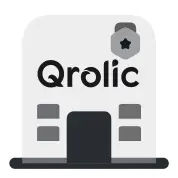Immediate steps to recover your website and prevent future attacks
If you’ve arrived here because your website has been hacked, you’re in the right place. This article is your emergency response page — designed to walk you through what to do right now, how to get your site back under control, and how to build strong defences so it doesn’t happen again.
Quick Summary:
- Act immediately: take site offline and stay calm.
- Change all passwords, then restore from a clean backup.
- Update everything, harden your site with security tools.
- Set up ongoing monitoring, maintenance, and an incident plan.
Table of Contents
- 1. Recognising the hack and staying calm
- 2. Immediate “first-aid” recovery steps
- 2.1 Take the site offline or enable maintenance mode
- 2.2 Change all access credentials
- 2.3 Back up current state (even if hacked)
- 2.4 Contact your host and gather your support team
- 3. Clean-up and restore
- 3.1 Identify the type and scope of hack
- 3.2 Restore from a known good backup or rebuild
- 3.3 Scan for malware and remove backdoors
- 3.4 Update everything: CMS, plugins, themes, server software
- 4. Preventing future attacks (hardening your site)
- 4.1 Access control & user privileges
- 4.2 Web Application Firewall (WAF), limiting login attempts
- 4.3 Secure configuration (file permissions, disabling editing)
- 4.4 Secure hosting, SSL, safe plugin/theme practices
- 5. SEO & reputation recovery (for your site and brand)
- 6. Final checklist & next steps
- 7. Why choose Qrolic
- Closing thoughts
1. Recognising the hack and staying calm
If your site has been hacked, it’s normal to feel alarmed—but stay calm. Panicking can lead to rushed decisions that may make recovery harder. Instead, take a breath and follow a structured process.
Signs of a hack could include:
- Your homepage is defaced, or displays strange content
- Visitors get redirected to spam or malicious websites
- You’re locked out of your CMS/admin panel
- Google shows warnings: “This site may be hacked” or “Deceptive site”
- Suddenly large numbers of user accounts created, or suspicious logins
Once you suspect a hack, you need to act immediately. Time is of the essence.
2. Immediate “first-aid” recovery steps
Here’s what you should do right away. These are urgent actions that will limit damage and help you regain control.
2.1 Take the site offline or enable maintenance mode
To prevent further damage—especially if malware is serving to your visitors—it’s wise to temporarily disable your public site or place it into maintenance mode. This protects your reputation, user data and reduces the risk of further spread.
2.2 Change all access credentials
Before doing much else, change every password and revoke suspicious accounts:
- Hosting control panel (cPanel / Plesk / whatever)
- FTP/SFTP accounts
- Database users
- CMS admin user(s)
- Email accounts tied to your site
Use strong, unique passwords (or passphrases) and consider using a password manager.
2.3 Back up current state (even if hacked)
Take a full backup of the site as it is now—files + database. Yes, it’s compromised, but you’ll want this snapshot for forensic purposes, or to prove what changed. Then you’ll revert to a clean backup.
2.4 Contact your host and gather your support team
Reach out to your hosting provider—they may have logs, backups, or knowledge of similar hacks. Assemble your web developer, hosting support, and any security specialist. The faster you gather your team, the faster you’ll recover.
3. Clean-up and restore
After the immediate emergency, now it’s time to clean up and restore your site to a safe state.
3.1 Identify the type and scope of hack
You’ll need to find out how bad the compromise is:
- What files were changed?
- Are there unknown users in the CMS?
- Are there new scheduled jobs/crons?
- Is your
.htaccessmodified or containing malicious redirects? - Is the database injected with spam content or malicious code?
3.2 Restore from a known good backup or rebuild
If you have a clean backup from before the hack, restoring that is often the fastest path. But make sure the backup is clean (not already compromised).
If no clean backup exists, consider rebuilding: reinstall CMS core files, upload clean themes/plugins, migrate content carefully.
3.3 Scan for malware and remove backdoors
Use security plugins (for wordpress) like MalCare, Wordfence or Sucuri to scan for hidden malware and backdoors.
Manually inspect suspicious files, plugins, themes—look for code containing eval, base64_decode, gzinflate, etc. Replace compromised files with clean versions.
3.4 Update everything: CMS, plugins, themes, server software
One of the most common causes of hacks is out-of-date software. Make sure:
- CMS core is up to date
- All themes/plugins are updated or removed if unused
- Server software (PHP, MySQL) is at a secure version
Also review file permissions (e.g., 755 folders, 644 files) and check.htaccess.
4. Preventing future attacks (hardening your site)
Prevention is far better than recovery. Once your site is back up, you must harden it so the same hack cannot happen again.
4.1 Access control & user privileges
- Use strong, unique passwords for all users. Encourage use of a password manager.
- Limit number of admin users. For CMS users, assign roles carefully; don’t give full admin rights if not needed.
- Enable Two-Factor Authentication (2FA) for all admin logins.
- Monitor and remove inactive or suspicious user accounts.
4.2 Web Application Firewall (WAF), limiting login attempts
- Install a WAF (many security plugins or hosting plans include one).
- Limit login attempts (after X failed attempts, block IP or require CAPTCHA).
- Disable or restrict XML-RPC, REST APIs, or other risky endpoints if not needed.
4.3 Secure configuration (file permissions, disabling editing)
- Ensure file/folder permissions are correctly set (e.g., dirs 755, files 644).
- For WordPress, disable file editing via dashboard by adding
define('DISALLOW_FILE_EDIT', true);inwp-config.php. - Protect sensitive files: restrict access to
wp-config.php,.htaccess, etc. - Keep plugins and themes to minimal necessary; remove unused ones.
4.4 Secure hosting, SSL, safe plugin/theme practices
- Ensure your hosting provider is reputable, supports security updates, uses isolation (especially on shared hosting).
- Enable HTTPS/SSL for your website. Secure data in transit.
- Only install themes/plugins from trusted sources; check reviews and update frequently.
- Use a staging environment for testing updates before applying to live site.
5. SEO & reputation recovery (for your site and brand)
If your site was hacked, it may have been flagged by search engines, your visitors may have lost trust, and your brand reputation may suffer. Here’s how to recover:
- After the clean-up, use Google Search Console (GSC) to check Security Issues and request a review once your site is clean.
- Inform your users/customers if their data may have been compromised—transparency builds trust.
- Submit a sitemap (e.g., your blog sitemap generated by Rank Math) so search engines know your fresh content is legitimate.
- Review analytics for any unusual drop in traffic; monitor recovery.
- As you build security and reliability, promote your site’s uptime, performance and trusted status (you might mention your blog list at Qrolic as part of your content strategy).
6. Final checklist & next steps
Here’s a quick checklist you can print or save:
| Task | Description |
|---|---|
| Take site offline / maintenance mode | Prevent further damage |
| Change all passwords & revoke suspicious logins | Immediate lock-down |
| Backup current (hacked) state | For reference |
| Contact host + gather team | Get support in place |
| Scan & identify hack scope | Understand what happened |
| Restore from clean backup or rebuild | Return to safe state |
| Update CMS, themes, plugins, server software | Patch vulnerabilities |
| Install security plugin / WAF / 2FA | Hardening defences |
| Enable monitoring/logging | Ongoing vigilance |
| Review file permissions & user access | Lock configuration |
| Restore SEO & reputation | Remove blacklists, inform users |
| Create incident response plan | For next time |
Next steps for you now:
- If you’re not comfortable doing the above, engage a trusted agency (like us at Qrolic) immediately.
- Schedule a full security audit of your site.
- Implement ongoing maintenance (you’ll find links on our site to our service pages).
7. Why choose Qrolic
At Qrolic Technologies we specialise in WordPress performance, security, scalability. If your site was hacked, our team can help with recovery, hardening, and ongoing management so you don’t repeat this.
Closing thoughts
Being hacked is scary—but it is recoverable. The key is rapid, disciplined response, followed by ongoing active management and prevention. Your website is a core business asset — don’t let one incident become a recurring nightmare. Use this article as your roadmap: act now, engage help if needed, and then lock your site down like a fortress.
If you need assistance with any of these steps (backup, scan, restore, monitoring), feel free to reach out to us at Qrolic — we’re ready to help you get back on track.






